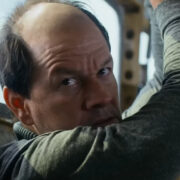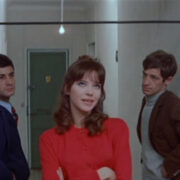ALL QUIET ON THE WESTERN FRONT And NARVIK: Germany And Norway Made Very Different Films About War And Trauma
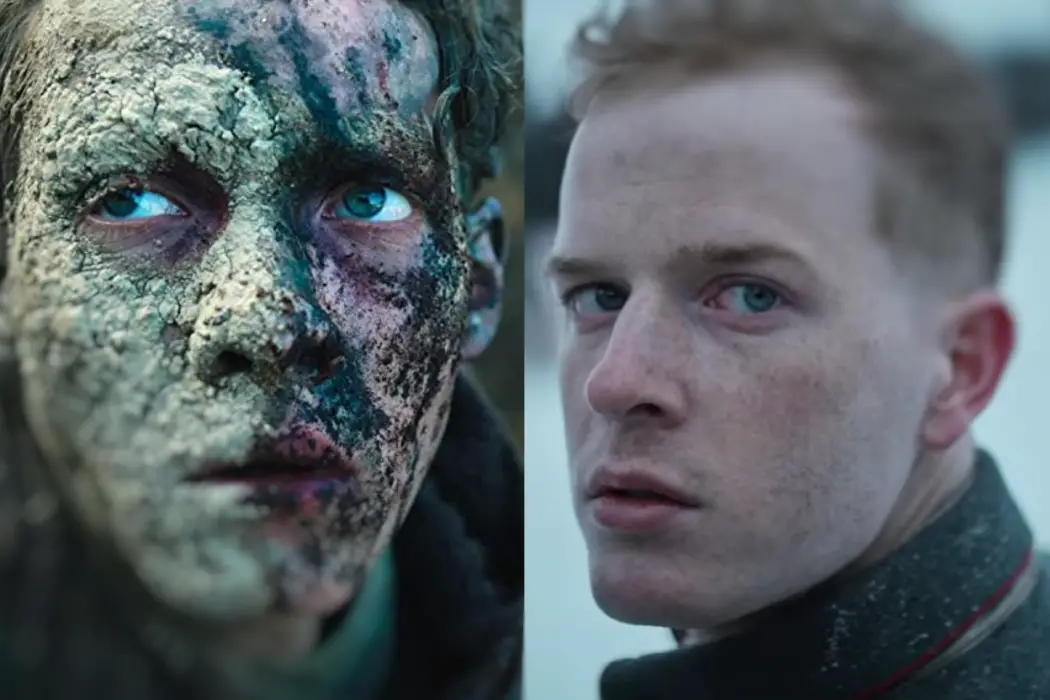
Film critic, Ithaca College and University of St Andrews graduate,…
The concept of the crucible is prevalent throughout all war stories. The crucible is the site of intense conflict in a story, where Situations compound on the hero and force them to change. It’s the beach in Saving Private Ryan. It’s No Man’s Land in 1917. The situations in All Quiet on the Western Front take place in and around the trenches, No Man’s Land, and the muck and mire of muddy open fields. The situations in Narvik happen in the town and mountains surrounding the titular Norwegian port. While it seems like a stupid, obvious distinction to draw that the settings of these two Netflix-released European war films from 2022 are different, their physical settings speak volumes about the films’ interests.
All Quiet sets out to be dirty and naturalistic. Like the trenches it depicts, All Quiet on the Western Front is a deep vein dug into the chest of an already-familiar land. We all know about World War I. We all know about the horrifying realities of war. We’ve seen a million images and heard a million stories that tell us. All Quiet’s focus on the trenches says, “Yeah, you might know this, but here’s one guy, one experience, one rut in the earth, and through him we’re gonna teach you all over again.”
Narvik, on the other hand, chooses as its focus an entire town. The intimate scale of the town brings with it focus on domestic and civilian life during wartime, setting up a juxtaposition between the peaceful civilians enjoying Norway’s neutrality and the Nazi soldiers about to roll up on their shores. So — two war films, two crucibles. Why does Narvik succeed while All Quiet on the Western Front doesn’t?
Physicalized Trauma in All Quiet On The Western Front
All war stories are about trauma. In making Narvik and All Quiet on the Western Front, Norwegian filmmaker Erik Skjoldbjærg and German filmmaker Edward Berger tried to find ways to physicalize that trauma. Berger does this in staid, familiar ways — kids cower in a bunker; an oppressive sound mix emphasizes the booming mortars and shaking wooden boards; a dude panics and runs out of the shelter, only to be immediately reduced to a blood mist spray. Protracted scenes find our hero, Paul Bäumer (Felix Kammerer) lamenting the dead, struggling to process the loss of his friends by sobbing and sputtering over their corpses, rebuttoning their coats and examining their muddy, bloody faces. It’s excessive and dirty, but it’s also very studied — the lighting in the bunker recalls the moody practical candlelight of 1917, while the sheer abundance of mud in the action scenes and how often Berger puts his main character in it recalls thriller films like Jurassic Park and Predator, war films like Deathwatch and Apocalypse Now, and horror films like Revenge and The Evil Dead. Paul slipping through the mud in No Man’s Land has all the viscous slapstick horror of a blood pipe erupting on Bruce Campbell in the basement of the cabin. His attacking a French soldier with his poop hole-digging shovel employs the same cinematic techniques as Campbell disemboweling a demon with an axe in The Evil Dead II — a shot from the demon’s perspective while Ash hacks it to bits. Berger traffics in the same cheap tricks that Sam Raimi built a career on, but in the context of a serious war film, they’re obvious, overplayed, and problematic. Perhaps that’s why Berger keeps trying to dial up the messiness of the film rather than the blood and gore.
We frequently see the characters pissing, shitting, dribbling spit, and vomiting. They ravenously devour food like animals. In one of the film’s most absurdly gross scenes, Paul falls into a mortar crater, tumbling down a dirt wall into a pool of mucky water at the bottom. He sloshes around, tries to scramble up the dirty incline on his hands and knees, and then slides back down and hides in the water. In a close-up, Kammerer’s face is half-planted in the mud, he’s hyperventilating, and he reaches for his knife. A French soldier is blown into the crater, and Paul sloshes again through the water to press him to the mud and turn his body into a pincushion. Each man is drenched in mud and blood. To stifle the dying man’s sputtering, Paul grabs a handful of mud and stuffs it in his mouth. Wheezing, Paul crawls on all fours across the crater. When he finds his conscience again, he has a solid minute of crying, and cinematographer James Friend really makes sure he gets all the spit Kammerer is producing. (It’s a performance that’s 50% saliva and 50% mud.) He goes back to the dying soldier, and in an act of apparent mercy, Paul tries to clear the mud off his face, but there’s so much that Paul seems to be rearranging it rather than cleaning it off. When he tries to offer him some water, he of course dips his filthy rag into the pool at the bottom of the crater — which itself is probably full of human excrement, blood, and chemicals — and then wrings the water into the French soldier’s mouth.
I think Berger is utterly incompetent when it comes to depicting trauma on-screen. Granted, I’m writing this from a café in New Jersey while I sip Diet Coke. I’ve not been in the trenches. But neither has Berger, I’m guessing. He reduces the suffering and trauma of war to people scrambling around in the mud and sloshing around in cholera water. He displays a complete inability to grapple with the emotional and psychological aspects of the war on these German teenagers. And yet, his film is up for nine Academy Awards. The people don’t want to see trauma, I guess; they want to see mud. And lots of it.
Collective And Societal Trauma In Narvik
Trauma in Narvik is often unseen. Narvik was abruptly sucked into World War II due to the iron trade that ran through it, so the film treats its war like a monster intruding on small-town Scandinavia. Since the characters are a corporal, Gunnar Tofte (Carl Martin Eggsbø), and his wife, the translator Ingrid (Kristine Hartgen), the film’s focus cannot be purely on the military. Ingrid has tense encounters with Nazi soldiers, hears the thunderous echoes of far-off bombardments, sees homes destroyed by bombings, and talks to distrustful German officers. That’s the trauma Ingrid experiences, not the fear of the frontlines. When we do see blood, gore, or grievous injuries, it’s a bloody body blurred out in the background, lying in the snow. In one scene, when Ingrid is called upon to treat the wounds of some German soldiers, an injured man is hunched over in a chair in dim lighting while Ingrid dabs at his burned back with a wet cloth. The man doesn’t scream or bleed profusely. The scene is somber, its drama complicated. Ingrid is forced to help her invaders, but at the same time, they’re people, and she’s altruistic enough to try and help the wounded no matter what side they’re on.
And then, there’s social trauma. Ingrid eventually helps the Germans, selling out a few foreign diplomats she’s been hiding in the mountains in exchange for a doctor to care for her son (Cristoph Gelfert Mathiesen). Her husband is disgusted by her when he finds out. The town shuns her and bullies her into leaving. German occupation left a significant social trauma on many Norwegians — after the war, thousands of Norwegians were tried for their collusion with Nazis during wartime. The Norwegians killed their wartime prime minister, Vidkun Quisling, via firing squad. Narvik uses Ingrid’s role to not just explore the trauma of living during the German occupation, but also the trauma of what comes after.
Scenes with Gunnar are necessarily more immediate. After he’s captured by Nazis, a title card spirits us away to the Roasme Mountains outside of Narvik, four weeks later. This skips over the initial trauma a POW might have experienced — one of the ways in which Skjoldbjærg reinforces that this film is about the town, not one soldier. Eggsbø now has pallid skin, a frostbitten face, and a weathered stare as he hauls a sled through the snow. Skjoldbjærg treats his actors with more trust than Berger and brings a classical approach to his drama; Gunnar is weak and his resolve nearly broken by his time as a German prisoner, and Skjoldbjærg relies on Eggsbø’s performance to show this. Gunnar wordlessly staggers through the icy trench the Germans have dug, clutches a machine gun, and uses the walls of the dugout to support himself. The trauma of war is writ in his performance rather than in mud caked on his face.
The conclusion of Gunnar’s time as a prisoner sort of lazily trades in on the same old war trope as All Quiet on the Western Front’s crater scene — Gunnar shoots a German soldier and flips him around to see that he’s just a kid. In his dying moments, Gunnar discovers, he’s reaching for a photo of his wife and kid in his breast pocket. Gunnar asks the man why the hell he’s here, but the soldier dies and Gunnar is rescued by Norwegian liberators.
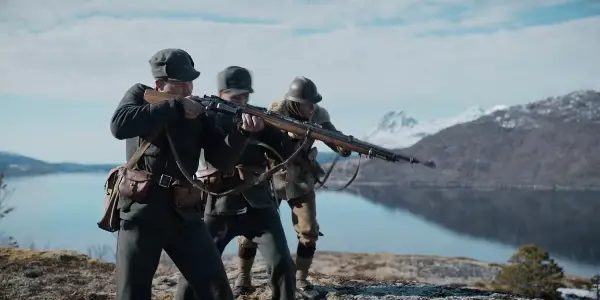
The scene is old-fashioned, unambitious, and rote, but since the film’s focus is on this small Norwegian town and how the war is impacting Norwegian society, it at least underlines the drama at the heart of Narvik. Though the scene is less eventful and far shorter than its counterpart in All Quiet, it feels more authentic precisely because of how understated it is and how deftly the scene ties into Narvik’s dramatic goals. All Quiet’s budget may be bigger, its frame busier, its sound mix louder and its camera shakier, but its depiction of trauma is childish and ineffective while Narvik’s feels more true, more adult.
Battle Of The Bastards
All Quiet on the Western Front has two noticeable influences — the first is that Game of Thrones single-take scene in the “Battle of the Bastards” episode, the one where Kit Harington’s Jon Snow is in the heat of battle, dodging horseback attackers and slicing dudes left and right. The scene, which was widely praised by television critics when the episode premiered, puts viewers into Jon’s shoes. Both the Game of Thrones battle and the final charge sequence in All Quiet on the Western Front follow a single character in a single take across a field, emphasize the chaos of war, and try to use modern Steadicam filmmaking to be as subjective as possible. The film’s second major influence seems to be 1917, whose gimmick is Roger Deakins’ stunning illusion that the film is happening in a single take in real-time.
The reason why All Quiet on the Western Front fails to use these techniques as effectively as its forebears is that it doesn’t understand them. Game of Thrones can afford to do this showy one-take battle scene because we’ve spent seven seasons following Jon’s journey. We understand him. Compare Jon to Paul Bäumer — we hardly know Paul. Besides a few scenes of Paul being swayed by his instructors and peer-pressured into joining the military, Berger and his co-screenwriters, Ian Stokell and Lesley Paterson, hardly let us learn anything about him. So why should we, in that final, single-take sequence, feel any fear for him, any suspense or empathy or support?
To quote the filmmaker James Gray, “Verisimilitude is an act of the spirit — it doesn’t come from camera movement.” 1917 understands that investment in a story’s drama and conflict cannot be achieved from style alone. Star George MacKay spoke on Deakins’ podcast about how much work he put in both on-set and off to make sure his performance was attuned to the film’s dramatic goals. He intensely labored to develop a backstory for his soldier, using his physicality to communicate all of this unspoken motivation to the audience. The result is an intense performance assisted by Sam Mendes’ knack for inventive and diverse action set-pieces. MacKay doesn’t spend much time in 1917 fighting. Instead, he’s stealthily slipping around ruined buildings, scrambling across debris, or taking in his environments.

All Quiet on the Western Front lacks that same sincere interest in its main character. Kammerer vaguely resembles MacKay — especially in the wide blue eyes — just as he resembles the young star (Aleksey Kravchenko) of another clearly inspirational war film, 1985’s Soviet production Come and See. All Quiet doesn’t let Kammerer live and breathe as much as it lets him run, cry, stab, and fall apart. The film only has one mode — chaos. And in the rare moments of stillness, Berger is perfectly content to let Kammerer stare dolefully at a dead body if it suits his larger stylistic ambitions, narrative and character and verisimilitude be damned.
Germany And Norway And Their Completely Different Cinemas
Large differences in the artistic approaches of All Quiet on the Western Front and Narvik are that the German film tries to be naturalistic and subjective while the Norwegian one is content with traditional storytelling conventions for war films, including a tighter focus on history, as shown in its diligent title cards explaining exactly what’s happening and when in relation to the broader conflict.
But the films hail from different countries with different motivations and goals. Narvik seeks to dramatize an underappreciated and unsung portion of history from the perspective of the oppressed. Meanwhile, All Quiet on the Western Front has a lot more baggage.
That Berger’s film is such an enormous production and has exploded in popularity is unsurprising. Modern German cinema is marked by two characteristics — larger budgets and filmmaking capabilities that complement more enterprising productions and stories (e.g. Netflix’s Dark and 1899) and a focus on producing period pieces that attempt to reckon with Germany’s roles in World Wars I and II (e.g. Labyrinth of Lies and Never Look Away). As a result, many modern German productions have received international acclaim — and All Quiet on the Western Front embodies both trends.
Norway, by comparison, does not have the same international reputation. The country is mostly known for its arthouse dramas (e.g. The Worst Person in the World) with only recent forays into bigger-budget blockbuster filmmaking (e.g. The Wave and Troll). Norway doesn’t revisit the World Wars as frequently in cinema as Germany does, which makes Narvik more unique. What’s more, Narvik’s surprising popularity on Netflix — reaching the Top 10 charts for Netflix viewership in the U.S. and Canada — is a boon for the country’s presence internationally after the Norwegian monster film Troll became Netflix’s biggest non-English production.
Narvik as a result has a lot more space to stretch. It can afford to take narrative risks — this is one of the only war films in memory, for instance, that divides its action between a husband and wife and doesn’t reduce the wife’s role to wondering when her husband will return from war. Ingrid’s story has stakes and tension, and Skjoldbjærg often seems more interested in her conflict than in Gunnar’s. Ingrid is forced to work alongside German Consul Fritz Wussow (Christoph Bach), and there’s a quiet but not unstated attraction the consul clearly feels for Ingrid, all while Ingrid’s also secretly harboring two diplomats from the Germans.
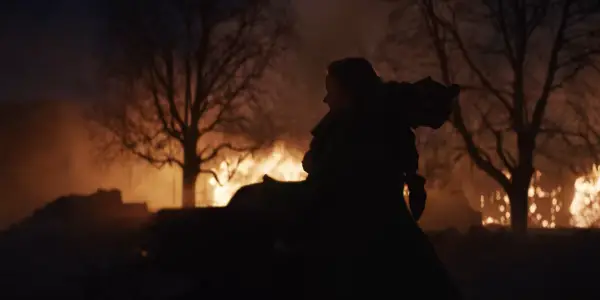
Narvik can also afford to play things safe, though. War films are not as persistent in Norwegian cinema as in American or German cinema, so the tropes we’ve seen a million times before may not be as worn-out or well-trodden to Norwegian audiences. The film isn’t solely for western Netflix subscribers, after all — Narvik has a theatrical release in Norway, where it became the 12th highest-grossing film of 2022. The country loves its war films, as the highest grossers that year were Top Gun: Maverick and another Norwegian WWII drama, War Sailor. In the past decade, Norwegian-produced WWII films The Crossing, The 12th Man, and The King’s Choice have all cracked the country’s top 10 domestic grossers. Norway has an appetite for historical war dramas, and Narvik’s skillful deployment of familiar war film tropes caters to this taste effectively and artfully rather than challenges it. And that’s OK! I’d rather be impressed by competent, exciting filmmaking than bored by pretension.
Ugh, Fine, Let’s Talk About “Anti-War” Art
Narvik is not anti-war. Narvik establishes pretty early on that the Nazis suck; they’re bad people, and their intrusion onto Norwegian shores has all the terror and brutality of a Middle Ages Viking raid. While the film is empathetic about the foot soldiers in the Nazi ranks — recall the scenes where they’re badly burned and in need of treatment, or when Gunnar sees that he’s just shot a young man with a family back in Germany — the overall goal of the film seems to be glorifying Norwegian armed forces, celebrating their hard-fought, scrappy guerrilla fight against the Nazis and their ultimate victory in Narvik. In case it wasn’t obvious enough that the film loves Norway’s armed forces and wants to celebrate their victory in the war, the film has since been subtitled, “Hitler’s First Defeat.” Narvik never once pretends to have a stance on warfare as a concept and instead is admirably nose-to-the-grindstone practical in its execution.
The same cannot be said for All Quiet on the Western Front. The book has a curious history of being cited as an “anti-war” text. Mostly by Nazis. For the record, I agree that it’s not in favor of war, but the legacy of this association is worth investigating. When German rearmament was occurring in the 1930s, the reputation of Erich Maria Remarque’s überpopular WWI text became a proxy battleground for re-militarization. Those who didn’t want war cited it as a pacifist tome, while the Nazis wanted copies burned because a truthful account of the pointlessness of mass conflict, the myth of nationalism, and the lie of the hero narrative would’ve prevented the country from going back to war, or at the very least made it more difficult to convince Germans of its necessity.
There is no such thing as an anti-war film, François Truffaut once said. Any critic worth their typewriter knows that quote. In theory, it’s a pretty comprehensive blanket statement about how recreating war in the cinema invariably results in its glorification. All Quiet on the Western Front is not an obvious case study for this, but it’s notable just how thoroughly the film fails its famously “anti-war” source material.
All Quiet on the Western Front relies on the over-the-top theater of carnage to sell its anti-war message. It has contempt for its audience. It beats them over the head with violence, gore, blood, and disgusting imagery as shock tactics. Yet the cinematography finds beauty in the violence. A flare descending over No Man’s Land is beautiful. A wide shot of the battlefield is impressive. Paul’s close-quarters combat is engaging and intelligently, cleanly choreographed and shot. But “beautiful,” “impressive,” “engaging,” and “intelligently, cleanly choreographed” are not adjectives I should be using for an anti-war film. A standard war film with no pretensions, like Narvik, can be all of these things without consequence. But in All Quiet on the Western Front, the result is an eradication of the source material’s morals and an indulgence in violence without reason.
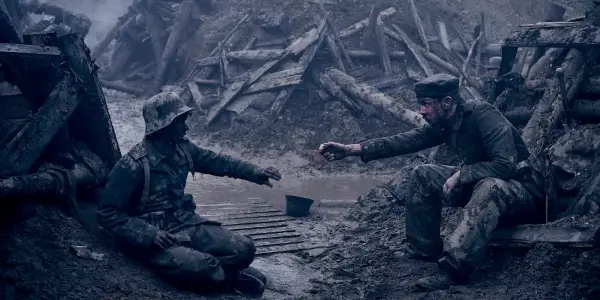
All Quiet on the Western Front is an exercise in hypocrisy. Its major deviations from the book include its bastardization of the iconic ending, its nationalistic Daniel Brühl–starring B-plot, and its employment of action film grammar in its set pieces, particularly the final charge. These changes undermine the “anti-war” sentiments and intention of the original story. The film has very little to say about World War I at all — and nothing to say of German culture, society, and politics surrounding World War I, or of the trauma experienced by its soldiers. For a film that tries so hard to disprove the glory of warfare, the tropes it traffics in are those typically reserved for action movie heroes — and what’s more glorious than that? One is left wishing a different agreed-upon visual language had been established decades ago for how to shoot war films, because if this is supposed to be our golden standard, it sorely needs reinvention.
Conclusion:
Narvik is a thrilling, crowd-pleasing war picture. It deserves all the love that All Quiet on the Western Front has gotten and then some. Really, it’s just wonderful to see another country producing war films and challenging expectations for what a war film should be, given that the genre was informed early on by American and British propaganda pictures shot during World War II. Narvik‘s focus on hometown drama amid the German occupation should resonate deeply with Norwegian audiences; for those of us watching on North American Netflix — or for me, anyway — it’s a potent reminder of how many important historical stories from other countries we remain ignorant of until they’re given a Netflix-sized spotlight. The irony is that I wasn’t even aware of Narvik until the Netflix algorithm recommended it to me after watching All Quiet on the Western Front. Based on the timing of its spike in popularity on the platform, I assume this is how many other viewers found the film as well.
All Quiet on the Western Front is pretty regressive as a war film. It’s short on ideas and doesn’t even understand the classic novel it’s adapting. The most I can say about it is that it wears its price tag on its sleeve, its cinematography is often beautiful albeit self-serving, and it features an obscure early model of tank that I’m sure is catnip to WWI nerds. Most everything else about the film is obvious, histrionic, pretentious, and idiotic, right down to the dramatic, oddly interspersed musical cues that made me think they were always seconds away from playing Kanye West’s “Black Skinhead.”
Dormant in the 2022 All Quiet remake is the potential for a better film. If Berger were less interested in watching characters fall in the mud, murder the French, or stuff their faces with food, he could have dedicated some time to actually unpacking the war imagery he’s toying with. Or at the very least, Berger could have gone the route of Narvik, a film that doesn’t pretend to be changing the world but instead does due diligence to a historical event and executes that vision with some maturity and panache along the way. Within the crucible of a war story, there’s potential for more than just blood and guts.
All Quiet on the Western Front and Narvik are currently streaming on Netflix.
Does content like this matter to you?
Become a Member and support film journalism. Unlock access to all of Film Inquiry`s great articles. Join a community of like-minded readers who are passionate about cinema - get access to our private members Network, give back to independent filmmakers, and more.
Film critic, Ithaca College and University of St Andrews graduate, head of the "Paddington 2" fan club.



